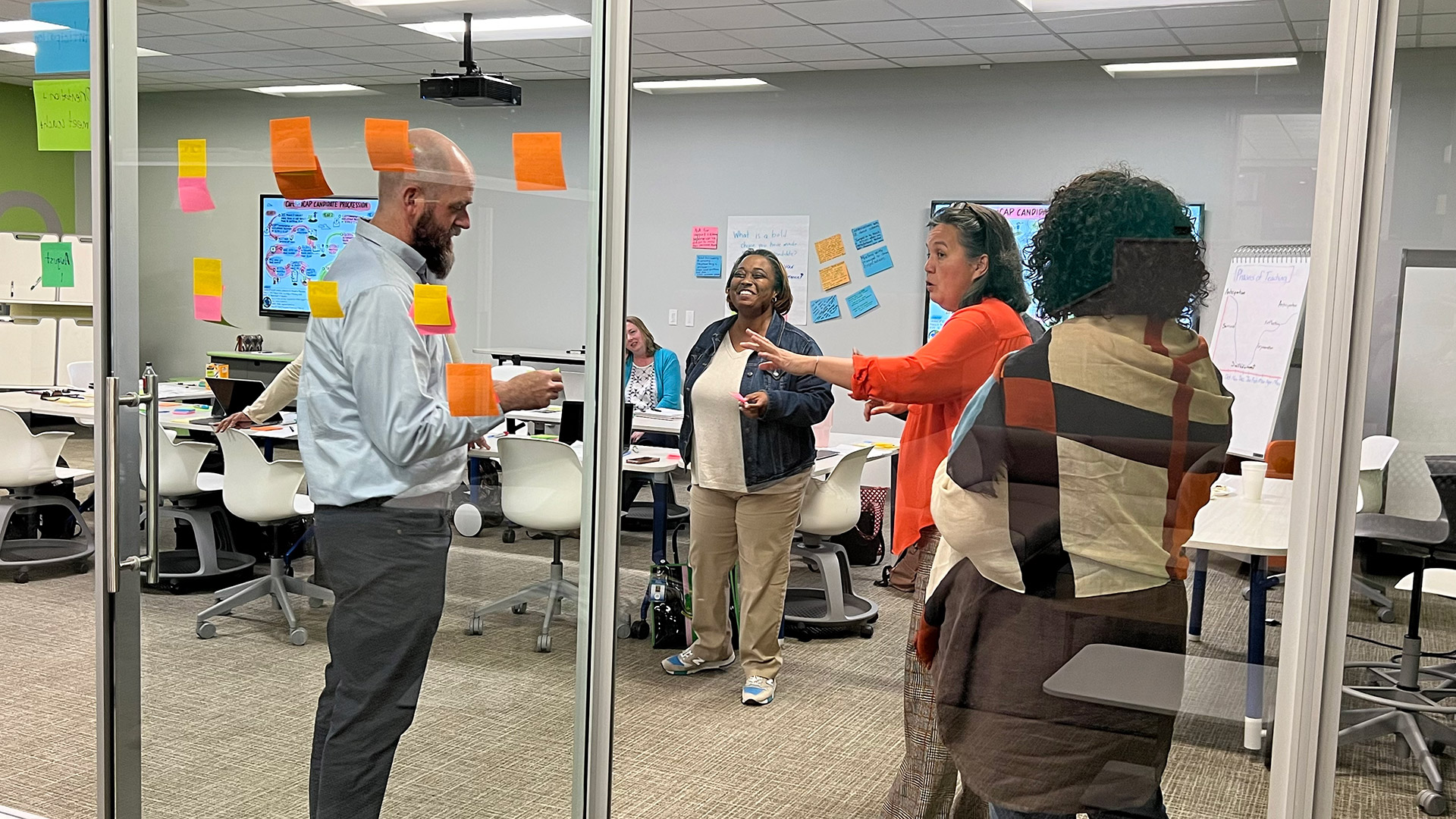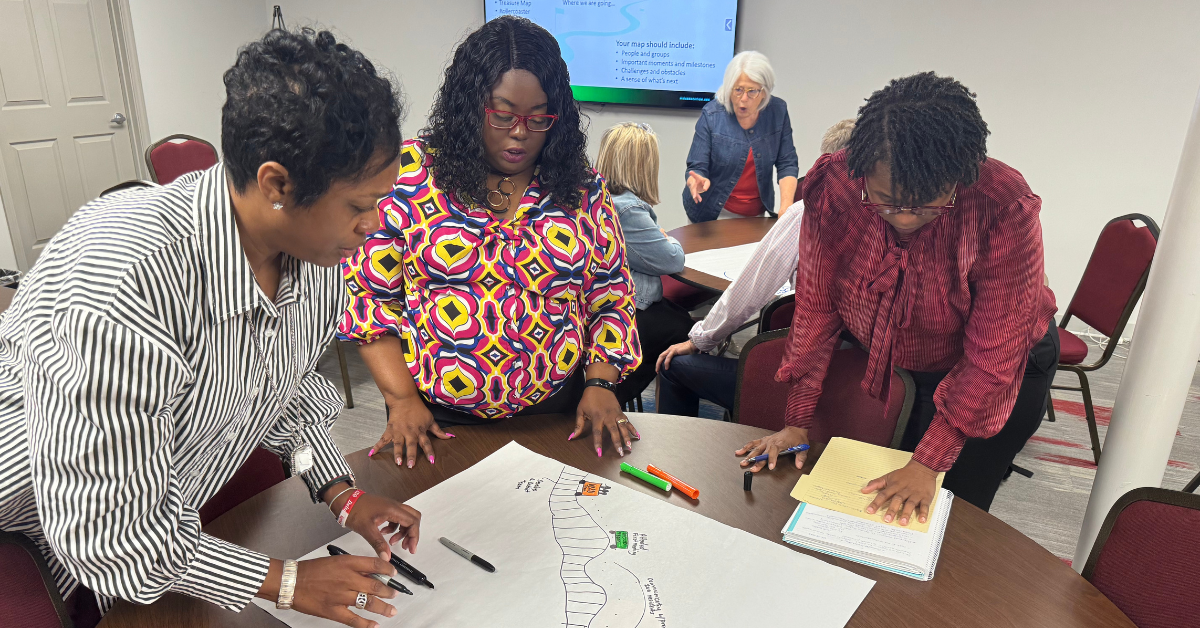Day: May 21, 2024
Doing More With Less: Preparing for the ESSER Funding Cliff
Next fall’s $190 billion federal funding cliff may be causing almost as many sleepless nights as the pandemic did. For superintendents and other K12 district leaders, early Elementary and Secondary School Emergency Relief (ESSER) funds were essential for one-time emergency spending. Later, districts spent more to address learning loss, staffing needs, and other capacity-building to support full recovery.
Assessments of learning loss and equity implications for communities suggest that full recovery from the pandemic is far from finished, even if ESSER funding is ending. It’s easy to build an argument that schools need more base funding to continue to hire and retain educators, restore long-vacant positions for counseling and other student supports, and provide intensive programs for targeted students.
But the reality is that districts and states will have to identify cuts with the end of ESSER funding. The sooner and more thoughtfully districts can begin planning, the better. Budget cuts are unavoidable, but district leadership teams can use this as an opportunity to focus on what is actually important. Four practices can make sure that the cliff doesn’t send you into a free-fall.
Take time to articulate priorities.
From paraprofessionals to the superintendent’s office, educators across all roles agree on one thing: they never have enough money or time. While it’s hard to make more of either, we can choose how we spend both. That means getting distinct about what is most important – not just what’s ideal or urgent – and putting all our energy and resources behind just those things.
The daily urgencies of our work can make it challenging to take the time to identify these top priorities, let alone articulate them for school communities. But it’s an essential first step. If we don’t know our priorities, we can’t protect them — and that means cuts will be felt even more deeply.
De-silo the decision-making process.
Defining “priorities” depends on your perspective. Meeting the needs of 30 individual students and determining what works at the district scale are and should be entirely different viewpoints for decision-making, even when they both seek to center learners’ needs. When those viewpoints aren’t reconciled, leadership teams tend to rely on a combination of mandates, roll-outs, and seeking buy-in to encourage alignment with tough calls.
While leadership requires those tough calls, it need not require tough talk.
The harder the decisions are — and cuts of this type will be very hard — the more important it is to communicate about priorities with others and not just to them.
In over a decade of helping school and district teams tackle challenging changes, our organization has never seen a single “roll-out” of an important decision work smoothly based on an announcement. Rather, it requires consistent and connected communication that links back to the priorities you’ve already discussed together.
The time spent to share ideas, ask questions, and seek input is significant, but it is much less time — and much less stressful time — than the time that leadership teams otherwise need to spend in contentious bargaining tables, staff meetings, public hearings, and press conferences.
Fight the epidemic of “program-itis.”
Even evidence-based programs with robust support from skilled educators can fall short of their promise for students and schools. And that can sometimes be the best-case scenario. Many, if not most, of the programs that districts and schools plan to implement, require extensive (and expensive) training for staff before they can get off the ground or demand total fidelity to work as promised.
Sometimes there are just too many programs to be done well. In one improvement leadership network we have supported, school leadership teams identified more than 30 programs adopted in relatively small elementary schools. When staff are struggling just to name all the programs they have in place, it’s a good bet that they are struggling to run them.
Programs should support students and educators – not the other way around. Budget cuts not only offer us the opportunity to trim away what’s not aligned with priorities and getting results, but also to think about what is really sustainable. No matter how much money you have to spend on potentially effective and helpful programs, too many of them create a deficit of time and energy that contributes to stress, burnout, and attrition while doing little for student learning.
Plan proactively.
K12 education continues to be asked to do more with less. The repercussions of cutbacks are real, as is the stress that these decisions place on district leadership teams and personnel. But we can buffer those impacts if we shift from a focus on scarcity, which engenders feelings of restriction and dread, and replace it with a planned focus on opportunities to shed that programmatic “clutter” in ways that help us serve students better in the long run.
Our book, Small Shifts, Meaningful Change, offers a protocol in Chapter 4 to help you bring all these ideas together to reimagine your resources as part of a single 90-minute meeting. You can find more free tools and discussion guides on Mira Education’s website or contact our team for advice and support.
3 Reflections to Lead School Improvement Planning
The end of the school year calls for both reflection and planning. In the midst of drafting master schedules and reimagining resources, school leadership teams must also take stock of what worked and what no longer serves their students and staff.
Assessing impact in the current year while also planning for the next can be overwhelming. It is even more so when you consider the increasing number of priorities that come with closing out the school year like standardized testing, setting the budget, and end-of-year celebrations – just to name a few.
There is an abundance of “how-tos” and “how-nots” when it comes to school improvement planning, but the expertise needed to make the right decisions for your school or district often lies within your team.
Use these three reflection prompts to unpack this school year and plan for the next.
1. At the beginning of the school year, what was the vision and goals for your students? For your team? How was that vision crafted?
A clear vision and strategy help orient your team and your shared work. Identifying a vision for both achievement and experience is paramount to shifting the work toward your desired outcomes. As you think about your vision for this last school year, recall how it was developed. Was it done alone or were others invited into the process?
By inviting others into the vision and strategy creation process, leadership multiplies. As the next iteration of the vision is developed, leverage the expertise across your team and across roles to increase the ownership of vision, strategy, and outcomes.
2. How did you support your team in the facilitation of this vision?
Supportive administration, whether on the district or the school level, is a key part of retaining talent and expertise. How leaders choose to not just involve staff in the vision and strategy but also support the work is pivotal for both retention and seeing that vision come to fruition. According to the EdWeek Research Center, of educators polled, having a more supportive principal/manager was the top reason they chose to stay in the profession.
As you reflect on this past year, what supports did you and other leaders offer to your team? Where could you shift your practice to be more supportive and attuned to staff needs?
3. How were capacity and resources aligned to support the vision and strategy for the year?
Capacity and resources are finite. That is a universal truth across education and across roles within each district and school. How you organize capacity and resources, however, can significantly impact the realization of your shared vision and strategy.
Consider how your team spent time this year. Was collaboration and planning time prioritized in the schedule? Was there space for cross-team learning? Time is just one of many resources you can leverage in support of your vision. Download our tool, Reimagining Your Resources, to facilitate a 90-minute discussion and recalibrate your resources to your shared vision.
As you dive into reflection, we invite you to extend that into team learning and discussion. Check out our book, Small Shifts, Meaningful Improvement, for additional tools and case studies on how to apply a collective leadership approach to your school improvement planning.

